Should you be raising a concrete slab yourself? Most professionals say no. In this article, we talk about why professionals do not recommend do-it-yourself concrete raising, how professionals raise concrete slabs, why you would need slab raising in the first place, the difference between polyurethane foam vs. mudjacking, and how much slab raising usually costs.
Should You Be Raising A Concrete Slab Yourself?
Concrete raising may seem simple, but if not done correctly, you can create more problems than before. In order to lift your slab, dime-sized holes must be drilled into the concrete. If done poorly, you could potentially crack your concrete, forcing you to have to replace the entire slab.
Unless you have access to polyurethane foam and a slab jacking pump, it’s going to be very difficult to create your own slab lifting mixture. Some blogs recommend using one part fly ash (a byproduct of burning pulverized coal), two parts sand, and one part Portland cement. This mixture is what experts call a “mudjacking slurry.” Weighing about 100 pounds per cubic foot, this heavy slurry can actually cause your slab to sink all over again.
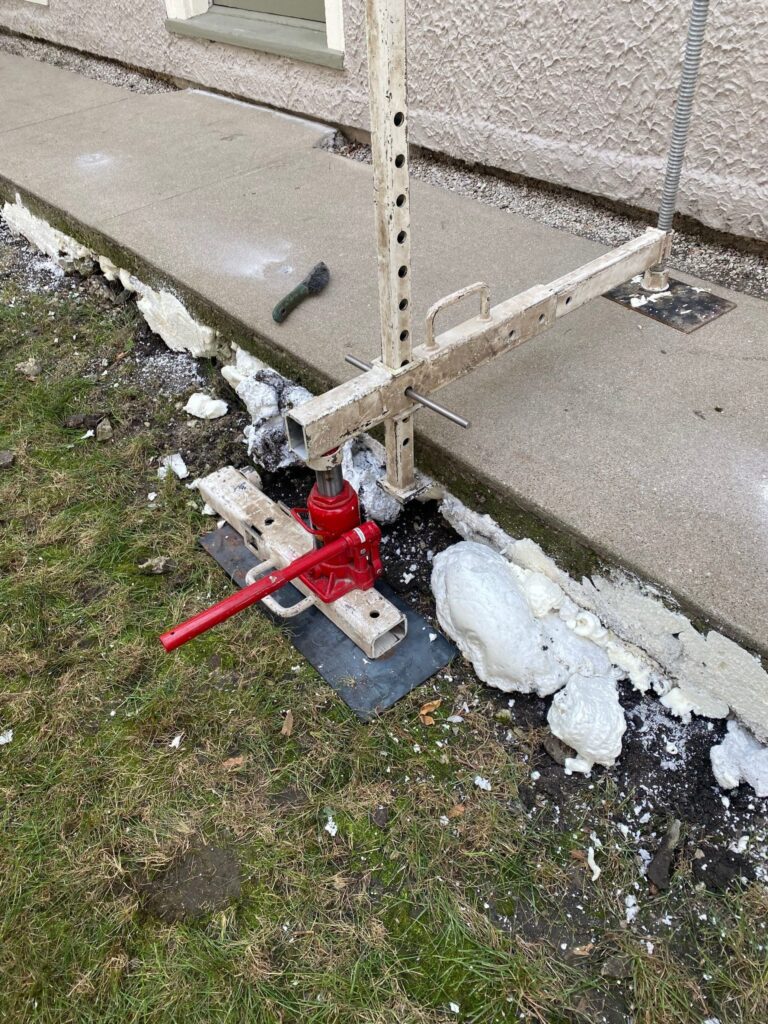
The mudjacking slurry is also very messy, and if you spill some on the ground or it leaks out from underneath your slab, you’re going to be left with a tremendous cleanup job. If you have a sunken concrete slab, it’s best to leave the repairs to the professionals. You might think you’ll save a few hundred dollars if you do it yourself. But, you know the old saying, “buy nice, or buy twice.”
How Do Professionals Raise Concrete Slabs?
The concrete raising process goes by many names, such as foam lifting, foam jacking, polyjacking, and more. Here’s how professional concrete lifting repair experts lift sunken slabs.
- First, dime-sized holes are drilled into your sinking slab. In some cases, a special sidewalk jack is used to lift your concrete instead of drilling holes (only for sidewalks).
- Second, the specially-made polyurethane foam is pumped under your slab until it fills the void beneath your concrete.
- Lastly, the foam will expand in just a few minutes, harden, and lift your slab back to where it’s supposed to be.
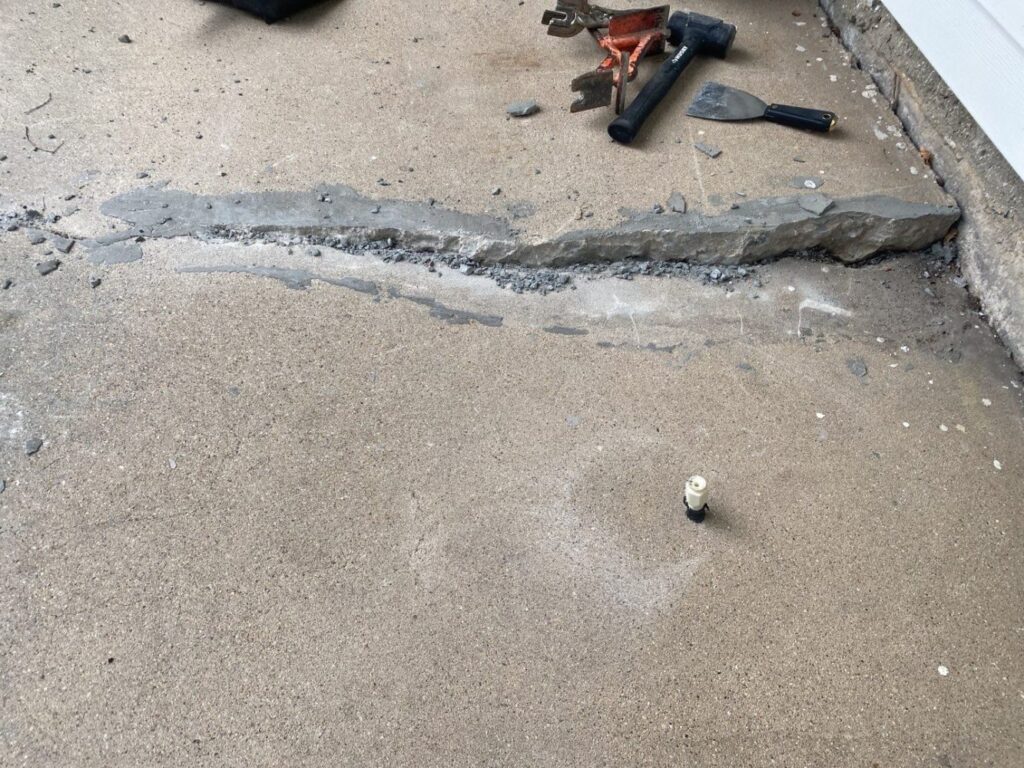
Why Do You Need To Raise A Concrete Slab?
There are a few reasons why you would need to raise a concrete slab.
- Water is draining or pouring too close to your slab – If water is draining toward your slab, or your gutters are pouring water too close to your concrete, it can wash away the dirt from underneath your slab. This may also occur if a sewer line breaks under your home, allowing wastewater to wash soil out from under your foundation.
- Your slab is resting on improperly compacted soil – If your concrete slab is resting on improperly compacted soil, meaning the soil particles were not packed together tight enough, your slab can begin to sink.
- Your slab is resting on expansive soil – If your concrete slab is resting on clay-rich soil, it can lift and crack based on moisture content in the dirt. When expansive soil absorbs water, it grows, lifting your slab. Then, as the soil dries, your slab will fall back down. This up-and-down movement can cause your slab to sink, lift, or crack.
- Your slab is too close to trees and their roots – Trees can have root systems double the size of their canopies. If your slab was placed next to a very large tree, its roots could already be making their way under your concrete. Roots can absorb all the water under your concrete and cause them to sink. Or, the tree roots can die, disintegrate, and leave behind voids, allowing your concrete to sink.
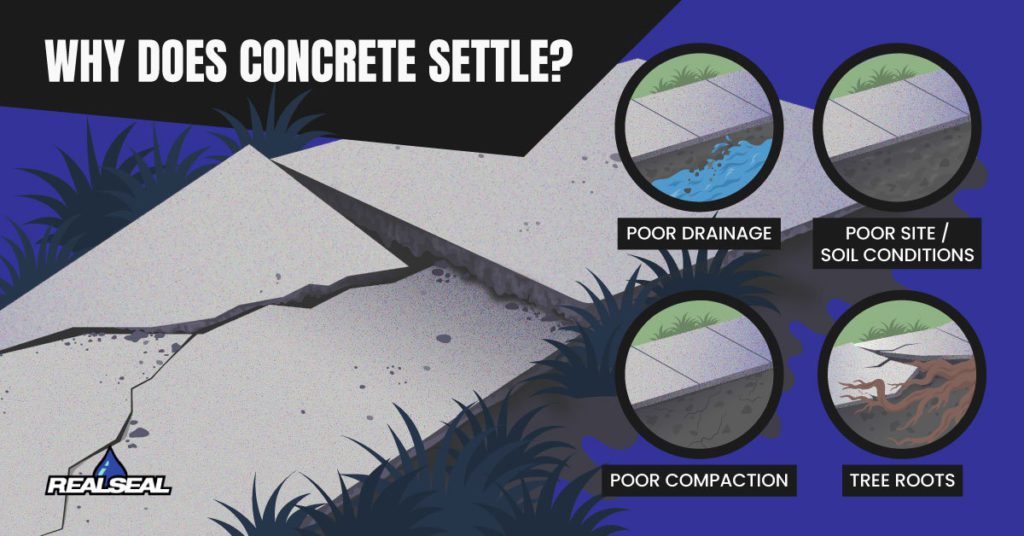
Polyurethane Foam VS Mudjacking
Most experts will recommend using polyurethane to raise concrete slabs rather than using mudjacking. As we mentioned earlier, the mudjacking slurry is very heavy and can allow your concrete slab to settle deeper into the soil. Polyurethane foam is lightweight, weighing about 2.5 to 4 pounds per cubic foot.
Here are a few other perks of using polyurethane foam compared to mudjacking.
- It cures faster than mudjacking, allowing you to use your slab just minutes after the foam hardens.
- It won’t poison your grass and doesn’t require any heavy machinery.
- It costs less than replacing your entire concrete slab.
- It lasts indefinitely.
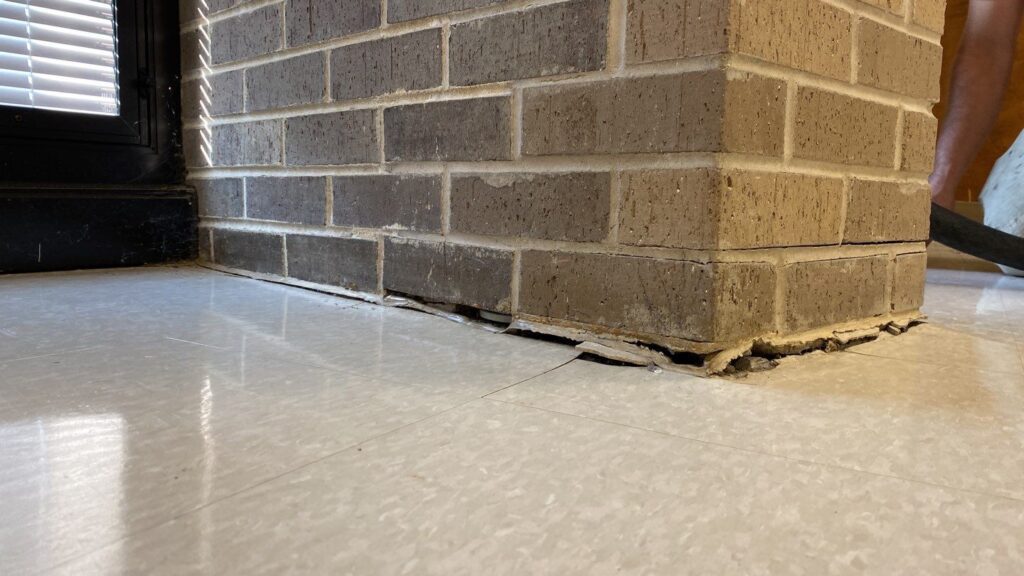
Read more: Concrete Leveling Foam: Why It’s Better Than Mudjacking.
How Much Does Raising A Concrete Slab Cost?
The base price for raising a concrete slab starts at $600. Then the price raises based on a few factors, such as:
- How large the void is under your slab.
- How wide and long your slab is.
- What type of slab needs to be lifted (i.e., sidewalks, patios, driveways, and interior concrete slabs).
Read more: How Much Does Concrete Leveling Cost?
Who’s Raising Concrete Slabs Near Me?
Are you living in the greater Chicago area? If you need a concrete slab raised, you should call The Real Seal. We’ll come out and inspect your concrete slab for free, give you our best repair estimate, and finally, a list of our finest solutions. Call us if you also need basement waterproofing, foundation repair, crawl space repair, crawl space waterproofing, or more.
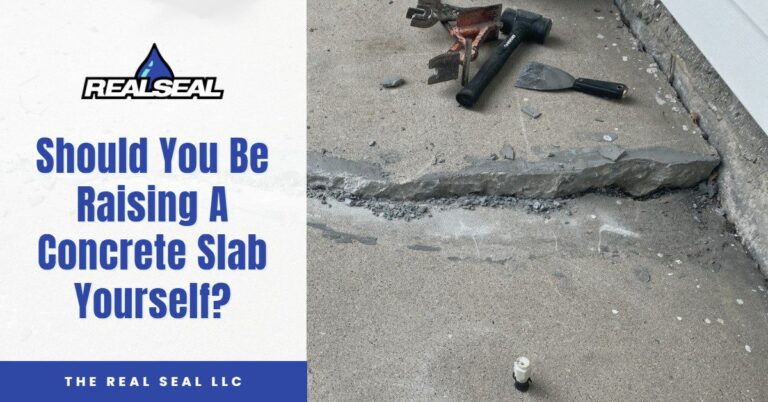
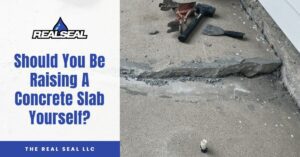





6 Responses
This is so incorrect it makes me sick foam can raise concrete yes but point 1 lacks any control of expansion of product so getting slab perfect is very difficult if your not a professional 2 the soil and moisture rate of soil affects expansion of the foam as said foam is usually a hydrophobic, 3 void filling if said foam does not fill all voids and hollows witch is very hard with foam as u lack control so voids make great homes for rodents that make honest that collapse and said pad sinks 4 cost foam is any where from 5 to 7 times the cost of grout simply because it’s a foam and production cost is high 5 what’s foam do in the ground long term what does it do it’s definitely not Green friendly so just a few items to ponder
Hi Dennis!
Thanks for commenting. To reply to your points:
1) Yes, it is very difficult if not a professional. Which is why this blog is about why you shouldn’t do it yourself. We are professionals and very good at the work indeed.
2) The soil and moisture of the soil does not affect the expansion of the foam. Hydrophobic means it pushes water away and does not absorb it.
3) We have never had a collapse. You can get all voids filled if done correctly and professionally. We make multiple holes to ensure we fill the entire area. However, with that said, we make no guarantees against rodents. They are crafty!
4) Foam does not cost 5-7 times that of grout. We appreciate you have your opinion on this, though factually it just isn’t true.
5) It is absolutely green friendly. Grout will leach chemicals into the soil. The benefit of foam is that it reacts and becomes solid and does not then leach chemicals as grout does.
We understand it is always a hard transition from someone who has been doing it the old way for so long that new techniques are in doubt. But Polyjacking is time-tested and proven to be effective. We wish you luck in the future!
Save a few hundred?
How about thousands.
When was the last time u did any job for hundreds?
Hi Barney! Saving money is always good, and with concrete raising via Polyjacking, you can save yourself hundreds to thousands of dollars depending on the size of the project.
Can an entire garage floor (approximately 20x60ft) be foam jacked? If so, is there a limit on how high it can be lifted?
Good questions, Andrew! Yes, the entire floor can be Polyjacked. The limit on which it can be lifted is based on several factors, including potential rebar, it’s original level, and how much the slab has cracked. Each situation is different, but a reputable contractor in your area should be able to guide you through the process.